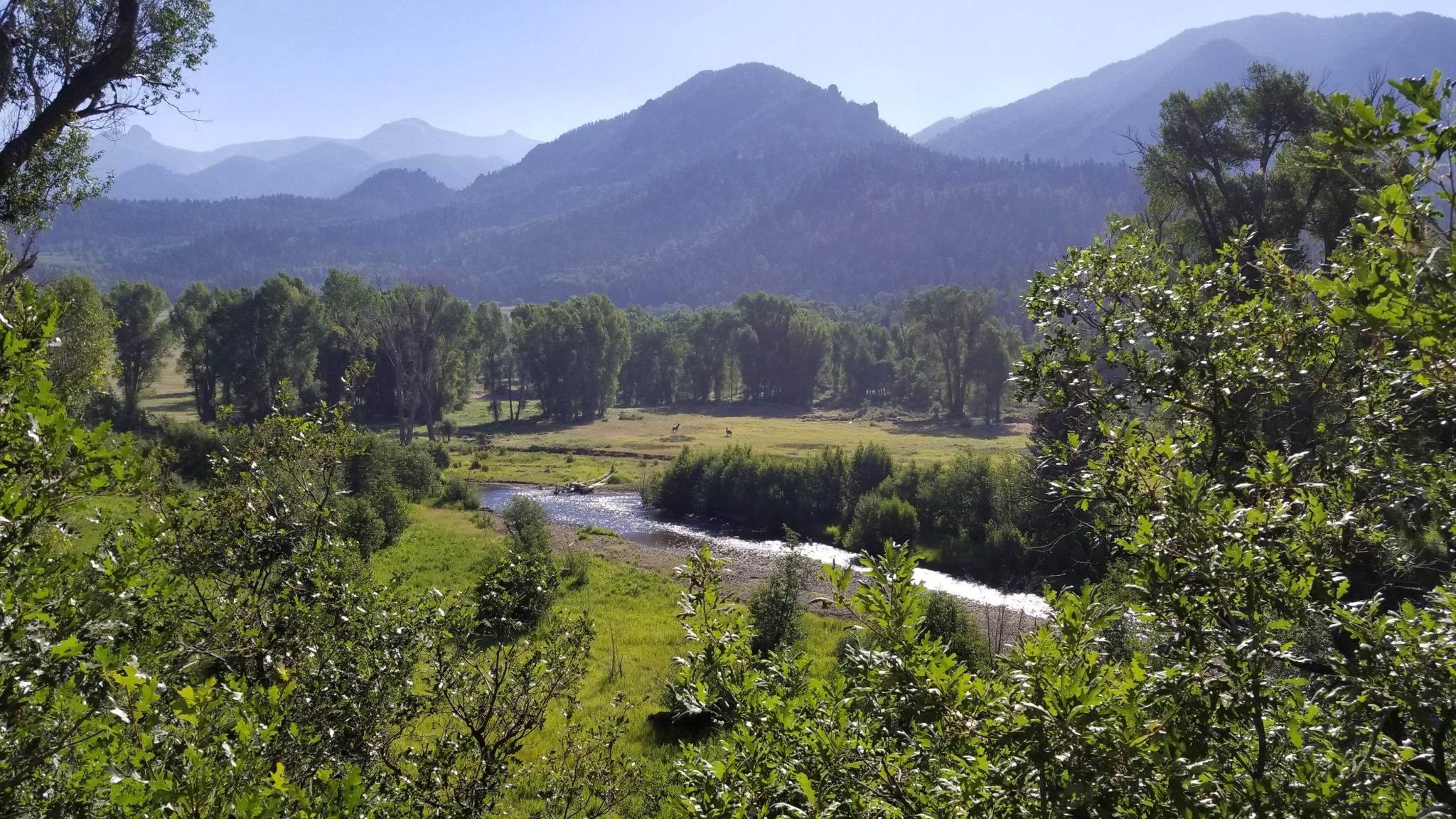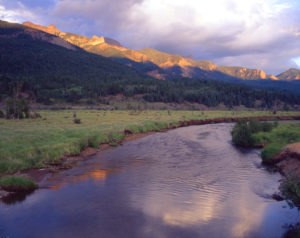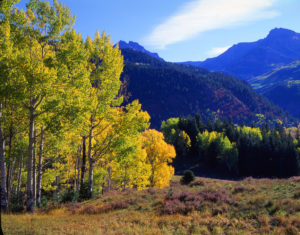
The conservation easement caps a 30-year effort by The Conservation Fund in the Navajo River Watershed, protecting 65,000 acres of ranches in on the Navajo, Little Navajo and East Fork of the San Juan rivers.
Photo: Christine Quinlan/The Conservation Fund
The Conservation Fund, Colorado State Forest Service and USDA Forest Service announced the permanent protection of the 16,723-acre Banded Peak Ranch on July 28. The protected land – in Colorado’s southern San Juan Mountains – will connect a largely undisturbed forest landscape, prevent development in critical wildlife corridors and conserve an essential watershed that provides water to Colorado and New Mexico communities.
The federal Land and Water Conservation Fund played a critical role to permanently safeguard these private forestlands from the threat of development.
Mike Lester, state forester and director of the Colorado State Forest Service, praised the work that was done with project partners and ranch owners.
“By protecting Banded Peak and its forests from future development, we’re ensuring the public benefits that these forests provide – from clean air and water to habitat for our iconic wildlife – persist in Colorado for generations to come,” he said.
The completion of this conservation easement is the final phase of a 30-year effort by The Conservation Fund in the Navajo River Watershed – protecting 65,000 acres that connect wilderness ranches in the upper reaches of the watershed to conserved working ranches at lower elevations on the Navajo, Little Navajo and East Fork of the San Juan rivers. Permanent protection of these lands is the product of public-private partnerships involving 10 different ranches.
“The headwaters of the Navajo River is one of the wildest and most pristine landscapes we have protected in Colorado,” said Tom Macy, western representative of The Conservation Fund. “It is a majestic place that has inspired many others to join us in the effort. If we are going to see grizzlies return to Colorado, it is likely to be here.”
Critical water supply, wildlife habitat, working forests

The watershed has critically important benefits, providing irrigation and drinking water for 1 million people in New Mexico, including 90 percent of Albuquerque’s surface water supply. Protecting Banded Peak safeguards 33 miles of streams on the ranch, including a five-mile stretch of the Navajo River, along with 850 acres of riparian and wetland habitat.
Banded Peak Ranch – roughly 20 miles southeast of Pagosa Springs – hosts a premier deer and elk hunting program that provides stimulus to the regional economy, while the carefully managed timber operation supports regional wood processing mills. The ranch has been an active participant in the Colorado State Forest Service’s Forest Ag program for two decades and manages its forests with the guidance of a management plan written in conjunction with the agency.
“Our family has been dedicated to land conservation and land stewardship in Colorado and elsewhere for many years,” said Karin Griscom, the family’s representative. “We were privileged to partner with The Conservation Fund, which has diligently worked with us to protect strategic lands and wildlife corridors in the Upper Navajo River watershed over the last 20 years. We also greatly appreciate the help of the U.S. Forest Service and the Colorado State Forest Service, elected officials and especially the Wyss Foundation that were all instrumental in the protection of this legacy ranch.”
The conservation easement on the ranch will be held by the Colorado State Forest Service. The two adjacent ranches – Catspaw and Navajo Headwaters – are owned by members of the same family and protected through a series of conservation easements held by the Colorado State Forest Service and Colorado Open Lands. These perpetual easements ensure that the natural richness and ruggedness of these lands will remain largely undisturbed, allowing ranch operations to continue while eliminating future subdivision for residential or commercial development.
Support from Colorado’s congressional delegation
Protecting Banded Peak Ranch was made possible through a $7 million grant from the USDA Forest Service’s Forest Legacy Program, which is administered in Colorado by the Colorado State Forest Service and funded by the Land and Water Conservation Fund.
The Land and Water Conservation Fund uses offshore drilling revenue – not taxpayer dollars – to fund conservation projects across the country. The Great American Outdoors Act, a bill that has passed both the House and Senate and is on its way to the president’s desk for signature, provides full and permanent support for the fund and future conservation victories like this one.
Colorado’s congressional delegation, led by U.S. Sens. Michael Bennet and Cory Gardner and U.S. Rep. Scott Tipton, is united in its support for this program and for the protection of the Banded Peak Ranch.
Read more about this project, including quotes from Colorado’s congressional delegation: https://col.st/jpRMy
Iconic wildlife

The Wyss Foundation also played an essential role in the Banded Peak Ranch project, providing funds to match the Land and Water Conservation Fund dollars.
“Thanks to the determination of The Conservation Fund and support from Coloradans demanding more protections for their lands and waters, Banded Peak Ranch will be preserved forever,” said Wyss Foundation President Molly McUsic. “Collectively, we must continue taking every opportunity to accelerate our conservation efforts, to safeguard imperiled wildlife and to ameliorate the worst impacts of a changing climate.”
Most of the wildlife species found along southern Colorado’s Continental Divide inhabit the Banded Peak Ranch. Elk, black bear, mountain lion, peregrine falcon, bald eagles, bighorn sheep and many others thrive in the area. Federally threatened Canada lynx also live on the property. The streams on Banded Peak Ranch support the recovery of the San Juan strain of the Colorado cutthroat trout, which was presumed extinct for 100 years, until it was rediscovered on the ranch in 2018. Grizzly bears were once present in this remote wilderness area until the late 1970s. In fact, this was the last place in Colorado to host the iconic and threatened species.